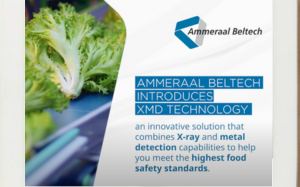Campylobacter survey: cumulative results from the first nine months
- Like
- Digg
- Del
- Tumblr
- VKontakte
- Buffer
- Love This
- Odnoklassniki
- Meneame
- Blogger
- Amazon
- Yahoo Mail
- Gmail
- AOL
- Newsvine
- HackerNews
- Evernote
- MySpace
- Mail.ru
- Viadeo
- Line
- Comments
- Yummly
- SMS
- Viber
- Telegram
- Subscribe
- Skype
- Facebook Messenger
- Kakao
- LiveJournal
- Yammer
- Edgar
- Fintel
- Mix
- Instapaper
- Copy Link
Posted: 26 February 2015 | The Food Standards Agency | No comments yet
The Food Standards Agency has published the latest set of results from its year-long survey of campylobacter on fresh chickens…


The Food Standards Agency (FSA) has today published the latest set of results from its year-long survey of campylobacter on fresh chickens. Campylobacter is a food bug mainly found on raw poultry and is the biggest cause of food poisoning in the UK.
The results are published for the first time as Official Statistics and the full report can be found via the link on this page. Cumulative results for samples taken between February and November 2014 have now been published, including results presented by major retailer.
The results to date show:
- 19% of chickens tested positive for campylobacter within the highest band of contamination.*
- 73% of chickens tested positive for the presence of campylobacter.
- 7% of packaging tested positive for the presence of campylobacter. Only three out of more than 3,000 samples of packaging tested positive at the highest band of contamination.
*More than 1,000 colony forming units per gram (>1,000 cfu/g). These units indicate the degree of contamination on each sample.
More than 3,000 samples of fresh whole chilled chickens and packaging have now been tested. Data continue to show variations between the retailers but none is meeting the target for reducing campylobacter (see table below).
The FSA’s 12-month survey, running from February 2014 to February 2015, will test around 4,000 samples of whole chickens bought from UK retail outlets and smaller independent stores and butchers. The full set of results is expected to be published in May.
The FSA has welcomed the publication by M&S of a case-study showing the results from the retailer’s recently implemented five-point intervention plan to reduce campylobacter on its chickens. The preliminary results published by M&S indicate a significant reduction in the number of the most highly contaminated birds.
Steve Wearne, FSA Director of Policy, said: ‘We now know it is possible to make positive inroads in the reduction of campylobacter. Figures released today by M&S show that their intervention plan has resulted in fewer contaminated chickens on sale in their stores. If one retailer can achieve this campylobacter reduction through systematic interventions then others can, and should.
‘Our survey is putting pressure on retailers to work with poultry processors to do more to tackle campylobacter. We want the industry to reduce the number of the most highly contaminated chickens as we know this will have the greatest impact on public health.
‘Campylobacter is killed by thorough cooking, but it should not be left to consumers to manage the risk. It is the most common form of food poisoning in the UK, affecting an estimated 280,000 people a year. Poultry is the source of the majority of these cases, so the industry should be making every effort to ensure chickens are as free from campylobacter as possible before they reach customers.
Richard McDonald, Chair of the ACT (Acting on Campylobacter Together) Board, said: ‘The UK is leading the way in the search for solutions to reduce campylobacter levels. We have learned a lot over the last five years about which interventions have the potential to make chicken safer. We must continue to work together to apply these successfully and help industry deliver the results we all want to see.
‘The ACT Board is central to this work and represents a forum where processors and retailers can come together to discuss their work to tackle campylobacter and results from the latest interventions. This collaborative approach will be essential as the focus shifts to application and delivery.
‘Although the impact of industry interventions has not been seen in the results from the FSA survey to date, we look forward to seeing progress in the FSA’s follow up survey.’
Summary of results by retailer
All results below are taken from the Official Statistics report for the survey, which can be found via the link towards the bottom of this page. This report gives a full explanation of the results and background to the methodology.
The FSA advises that the data for individual retailers have to be interpreted carefully. Confidence intervals are given for each retailer and the ‘others’ category. These show the likely range of the results allowing for the number of samples taken.
The 95% confidence intervals means that we would expect the true prevalence to fall within the lower and upper confidence limits 95% of the time. A key factor in the width of this interval is the sample size. Those retailers with a relatively low market share have a low sample size and correspondingly wide confidence intervals.
The results show, taking the confidence intervals into account, that Tesco is the only one of the main retailers which has a lower incidence of chicken contaminated with campylobacter at the highest level (>1,000 cfu/g), compared to the industry average. Asda is the only main retailer which has a higher incidence of chicken that is contaminated by campylobacter at the highest level, compared to the industry average. However, the results suggest that none of the retailers is achieving the joint industry target for reducing campylobacter.
|
Retailer |
Number of |
% skin samples positive for campylobacter (95% confidence interval) |
% skin samples |
% pack samples positive for campylobacter (95% confidence interval) |
|
Asda |
491 |
78.9 (75.2 – 82.4) |
31.1 (27.0 – 35.2) |
13.0 (10.1 – 16.1) |
|
Co-op |
274 |
75.6 (70.2 – 80.6) |
16.4 (12.3 – 20.9) |
4.4 (2.1 – 7.0) |
|
M&S |
103 |
72.2 (63.0 – 80.7) |
20.7 (13.0 – 29.1) |
3.8 (0.8 – 8.1) |
|
Morrison’s |
271 |
76.2 (71.4 – 80.9) |
22.9 (18.0 – 28.0) |
13.3 (9.5 – 17.4) |
|
Sainsbury’s |
451 |
69.6 (65.4 – 73.7) |
14.3 (11.2 – 17.6) |
4.0 (2.3 – 6.0) |
|
Tesco |
925 |
68.2 (65.3 – 71.1) |
12.3 (10.2 – 14.4) |
4.1 (2.9 -5.4) |
|
Waitrose |
96 |
71.7 (62.1 – 80.5) |
15.6 (8.5 – 23.7) |
6.2 (2.1 – 11.7) |
|
Others1 |
450 |
76.9 (72.9 – 80.7) |
23.2 (19.4 – 27.2) |
6.8 (4.6 – 9.2) |
|
Total |
3,061 |
72.9 (71.4 –74.5) |
18.9 (17.5 – 20.3) |
6.8 (5.9 – 7.7) |
- The ‘Others’ category includes supermarkets where the market share was deemed small using the 2010 Kantar data: eg Lidl, Aldi, Iceland, plus convenience stores, independents, butchers etc.
Consumer advice
The FSA is pressing the industry to play its part in reducing the levels of campylobacter contamination at each production stage to as low a level as possible before raw chicken reaches the consumer. Chicken is safe as long as consumers follow good kitchen practice:
- Cover and chill raw chicken: Cover raw chicken and store at the bottom of the fridge so juices cannot drip on to other foods and contaminate them with food poisoning bacteria such as campylobacter.
- Don’t wash raw chicken: Cooking will kill any bacteria present, including campylobacter, while washing chicken can spread germs by splashing.
- Wash used utensils: Thoroughly wash and clean all utensils, chopping boards and surfaces used to prepare raw chicken. Wash hands thoroughly with soap and warm water, after handling raw chicken. This helps stop the spread of campylobacter by avoiding cross contamination.
- Cook chicken thoroughly: Make sure chicken is steaming hot all the way through before serving. Cut in to the thickest part of the meat and check that it is steaming hot with no pink meat and that the juices run clear.








